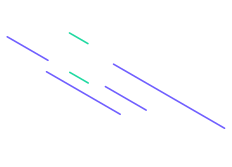






Name
Chamberlain University
NR-505: Advanced Research Methods: Evidence-Based Practice
Prof. Name
Date
Article Title: Are the studies on cancer risk from CT scans biased by indication? Elements of answer from a large-scale cohort study in France
Article Link
For this week’s assignment, I selected the above research article as it aligns with my PICOT question and provides an opportunity to critique its methodology, strengths, and implications.
PICOT Question: In children and young adults, does the use of reduced radiation exposure in computed tomography (CT) scans decrease the risk of developing cancer compared to higher radiation doses over their lifetime?
The article applies a quantitative research design, which evaluates how exposure to CT radiation during childhood or adolescence influences cancer development. The researchers aimed to determine whether CT scans contribute to increased cancer risks and how predisposing factors affect the assessment of radiation-induced risks.
The study employed a quantitative design, focusing on numerical data to identify relationships between variables within a large population. Quantitative research is particularly useful when measuring exposure levels and associating them with health outcomes.
This study was strengthened by its large sample size and its emphasis on analyzing the correlation between CT exposure and subsequent cancer development.
The study involved a non-probability sampling method. This means that participants were selected based on specific criteria rather than randomization.
Sample Description:
Population size: 67,274 children
Criteria: Born after January 1, 1995, with first CT scans before age 10 between 2000–2010
Exclusion: Children with a cancer diagnosis before their first CT scan
Advantages of non-probability sampling include its convenience, efficiency, and lower cost. However, limitations involve potential sampling bias and limited generalizability (Elfil & Negida, 2017).
| Sampling Method | Details |
|---|---|
| Sample Size | 67,274 children |
| Sampling Type | Non-probability sampling |
| Criteria | Born after 1995; CT before age 10; no prior cancer diagnosis |
| Strengths | Quick, inexpensive, and convenient |
| Limitations | Potential bias; limited representativeness of the general population |
The research collected data from 21 French university hospitals and 23 radiology departments, focusing on pediatric CT scan exposure.
Data Sources:
Electronic Radiation Information System (RIS)
Hospital discharge databases
Picture Archiving and Communication System (PACS)
Data Collected Included:
Cumulative X-ray dose from radiology protocols
Cancer diagnoses from national cancer registries
Patient demographics (e.g., age, sex)
Anatomical location of CT exposure
Follow-up lasted until December 2011, cancer diagnosis, death, or the child’s 15th birthday, whichever occurred first.
The study explored whether pediatric CT scan exposure leads to cancer development.
Key Findings:
27 cases of central nervous system tumors
25 cases of leukemia
21 cases of lymphoma
32% of cases involved children with predisposing factors
However, the study highlighted that the four-year observation period was too short to yield conclusive evidence about long-term cancer risk from CT exposure.
Although the authors did not explicitly emphasize strengths, several elements stand out:
Large cohort size increased reliability of findings.
Systematic data collection from multiple hospitals ensured consistency.
Objective measurement of radiation doses strengthened validity.
These features supported the credibility of the findings despite time limitations.
The primary limitation was the lack of information on the clinical reasons for CT scans. Some scans may have been performed to evaluate suspected malignancies or to monitor conditions associated with higher cancer risk, potentially confounding results.
As the authors suggest, collecting detailed information on predisposing conditions would improve accuracy in estimating cancer risks related to CT radiation (Journy et al., 2015).
Future studies and clinical practices should emphasize:
Optimization of CT procedures to minimize unnecessary radiation exposure.
Consideration of uncertainties in dose estimation when conducting risk analyses.
Increased use of non-ionizing alternatives, such as magnetic resonance imaging (MRI) and ultrasound, particularly in children and young adults.
These approaches can reduce long-term health risks while maintaining diagnostic accuracy (Journy et al., 2015).
Elfil, M., & Negida, A. (2017). Sampling method in clinical research: An educational review. US National Library of Medicine, National Institutes of Health, 5(1), 2107. https://www.ncbi.nlm.nih.gov/pmc/articles/PMC5325924/
Journy, N., Rehel, J. L., Pointe, D. L., Lee, C., Brisse, H., Chateil, J. F., Caer-Lorho, S., Laurier, D., & Bernier, M. O. (2015). Are the studies on cancer risk from CT scans biased by indication? Elements of answer from a large-scale cohort study in France. British Journal of Cancer, 112, 185–193. https://www.nature.com/articles/bjc2014526